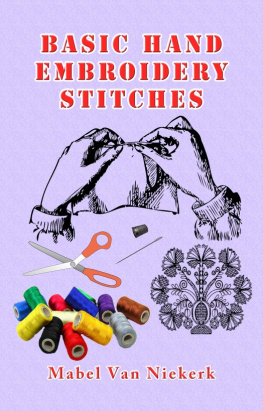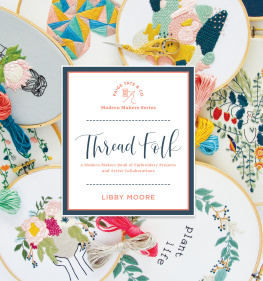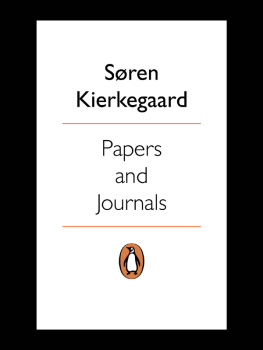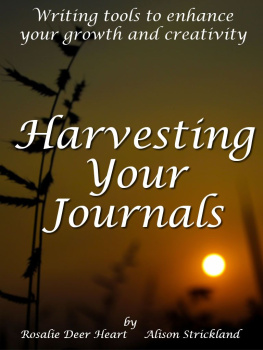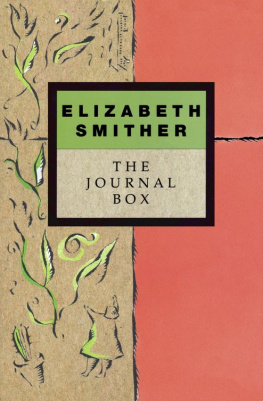Contents
BOUND
byhand
OVER
BEAUTIFULLY
HANDCRAFTED
JOURNALS
Erica Ekrem
THIS BOOK IS FOR ALL OF THOSE WHO CAME BEFORE, BURNING CANDLES AT BOTH ENDS TO CRAFT A WAY INTO BEING.
LARK CRAFTS and the distinctive LARK logo are registered trademarks of Sterling Publishing Co., Inc.
Text and photography 2015, 2018 Erica Ekrem
Photograph on 2015 Sterling Publishing Co., Inc.
Illustrations 2015, 2018 Sterling Publishing Co., Inc.
All rights reserved. No part of this publication may be reproduced, stored in a retrieval system, or transmitted in any form or by any means (including electronic, mechanical, photocopying, recording, or otherwise) without prior written permission from the publisher.
ISBN 978-1-4547-1084-4
For information about custom editions, special sales, and premium and corporate purchases, please contact Sterling Special Sales at 800-805-5489 or
sterlingpublishing.com
larkcrafts.com
Illustrations by Alexis Seabrook throughout, Illustrations by Sue Havens on
Interior design by Lorie Pagnozzi
Cover design by Elizabeth Mihaltse Lindy
Contents
Introduction
Since the time I attended my very first bookbinding class almost a decade ago, Ive met hundreds of bookbinders and have found there to be a certain kind of person that revels in the beauty of hand-bound books. Some bookbinders fall fast into friendship with one another while others seem to believe in contrasting approaches. Yet there is a distinct thread of similarity running through uswe love the look and feel, and the undeniable potential, of a hand-stitched book.
Our reasons are diverse. In this age of technology, it has become extraordinary to make something so ordinary with ones own hands. It has become distinctly easier to buy a handmade book than to source all the tools and materials and carve out the space and time to make one yourself. Yet we do it because it is empowering to create a book from scratch, even if it doesnt turn out perfect the first or tenth time. An imperfect book is still beautiful, perhaps because were surrounded by machine-made goods that are so strictly rectangular or circular that we cant help but adore imperfection for its rarity and the subtle sense of anima that emanates from it. Or maybe we love handmade books purely for the possibility they suggesta new beginning, a story waiting to be told, a miniature gallery ready to take form. And sometimes blank books help us make sense of our lives. Their ordered pages suggest a definite beginning and end and can help us to begin fresh, find closure, and, overall, make sense of thoughts, feelings, and life events that can often feel blurred or non-linear. We write, document, sketch, and practice creative expression to find the meaning of life, or to rewrite a way of living that would better serve ourselves and the world around us.
Perhaps the biggest reason we are drawn to handmade books is because we humans have been making and using them as tools for a very long time. Journaling in particular is an ancient practice. Relics of manuscripts have been found that date back to 56 AD in China. Some of my favorite examples of historical journals are the pillow books of tenth-century Japan. These private diaries were kept by women of the court and were inscribed with personal musings, poetry, short stories, and opinions they could not openly share during that time period. Modern memoirs, such as the diary of Anne Frank, have given us a glimpse into the ways in which ones inner life carries on and seeks inspiration despite immensely difficult circumstances faced in the outer world. Franks private writings teach us compassion and help us to transform the world into one that celebrates diversity and tolerance.
In the twenty-first century, many of us have moved our diaries or writing to the Internet in the form of digital blogs or daily posts on social media. I admit that I too have found myself typing on a keyboard more often than putting my pen to the pages of my journal. However, there is something intrinsically human in the act of putting ink on paper. For me, writing in a journal seems to counterbalance the impersonality and sterility of high technology. When we make a mistake with the pen, we cant simply delete it as if it didnt exist. With our mistakes on paper, we get to face our humanity and become intimate with it again. We get to face the beautiful imperfections that make each of us unique. The same goes for the hand-bound bookeven if you follow the instructions in this book word for word, using the same tools and identical materials listed here, your book is going to become an object of art that is uniquely yours.
Whoever you are and whatever your reason for loving handmade books, thank you for being here. In the following pages, youll find projects for making a diverse range of books that will serve a variety of daily purposes. I will lead you step by step through folk-style bookbinding projects that you can make from a humble set of tools and common materials, some of which you can upcycle from thrift stores or even find at home. You dont have to be experienced in bookbinding to attempt these projects; these are everyday books for everyday folks. Whether youre new to the art of bookbinding or a seasoned binder, I offer this book as a resource for learning new techniques, fueling your creativity, and helping empower and express your uniquely authentic self.
Youll learn to make books to serve your occupation or hobbybuilder, poet, or herbalist, for example. There are books you can put to use on a daily basis for note-taking, as a spiritual practice, and for keeping track of your favorite recipes. Some projects may challenge how you think of or identify with yourself, giving you the opportunity to connect with the artist, mystic, or alchemist archetype within you. Youll also learn new knots, ornamental weaving techniques, and how to dye handmade paper from a rainbow of ingredients found in your kitchen pantry. And if you are someone with a daily journaling practice, Ive designed projects especially for you too.
Learning a new skill or technique can be awkward sometimes. If you find yourself challenged at any point while making your hand-bound book or while filling the pages within, I encourage you to step outside. Give yourself the gift of fresh air by taking a few deep breaths; then take a walk alongside plants or a nearby body of water to change the rhythm of your thinking. I promise you will feel different, something inside you will shift, and when you come back to your project it will seem a little or a lot less intimidating. If you enjoy collaboration, invite a family member or a circle of friends to your home and make books together. It is likely you will each have diverse strengths and skill sets to offer and can help one another out when needed, as well as enjoy the benefit of camaraderie during the process. The projects range in difficulty, with some a bit more challenging than others. I encourage you to try them all. If the first attempt doesnt work out, dont be afraid to try again. No matter your experience, start with the basics, such as a pamphlet-stitch variation; then build up to more complex multistitch bindings.


